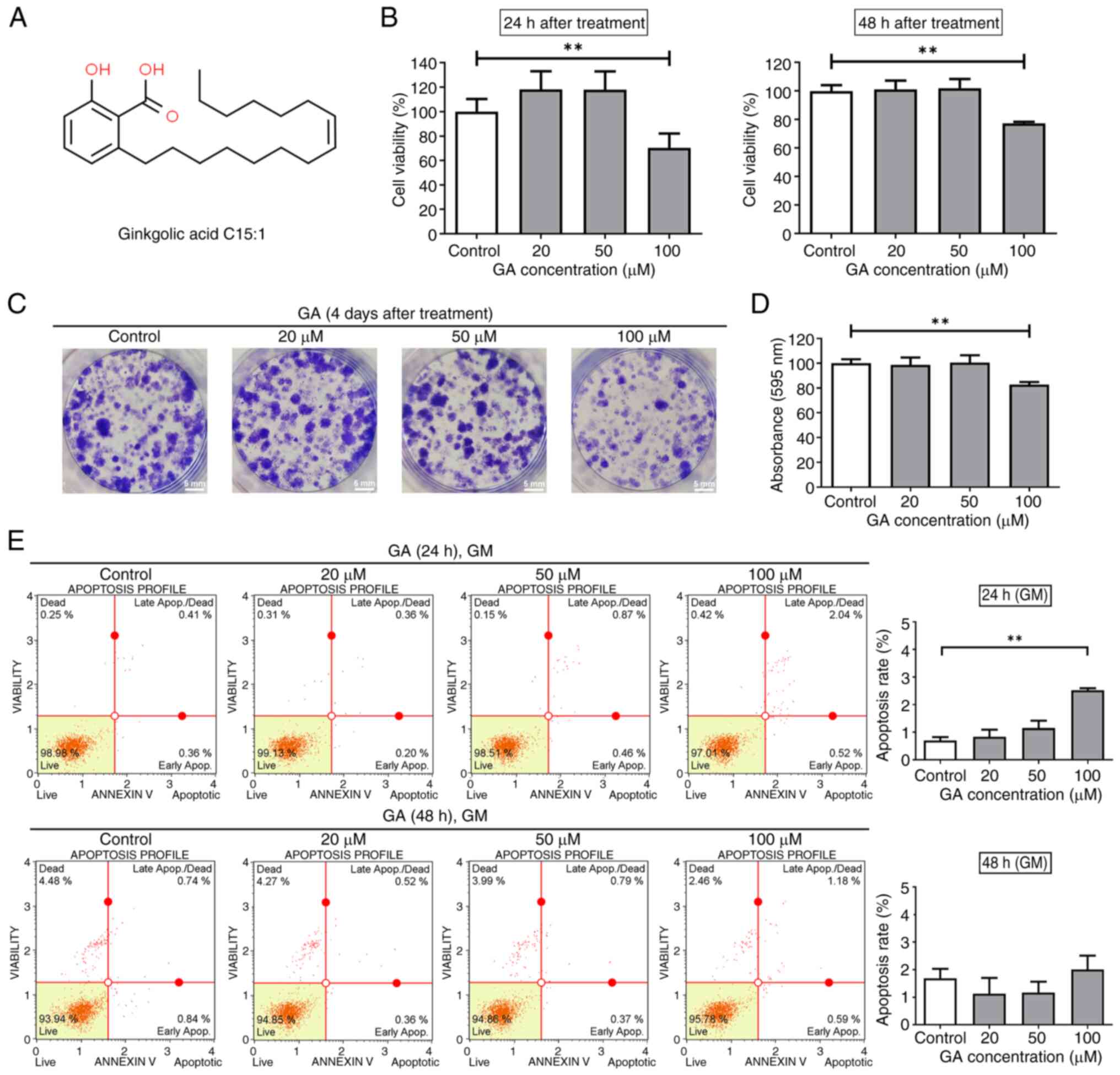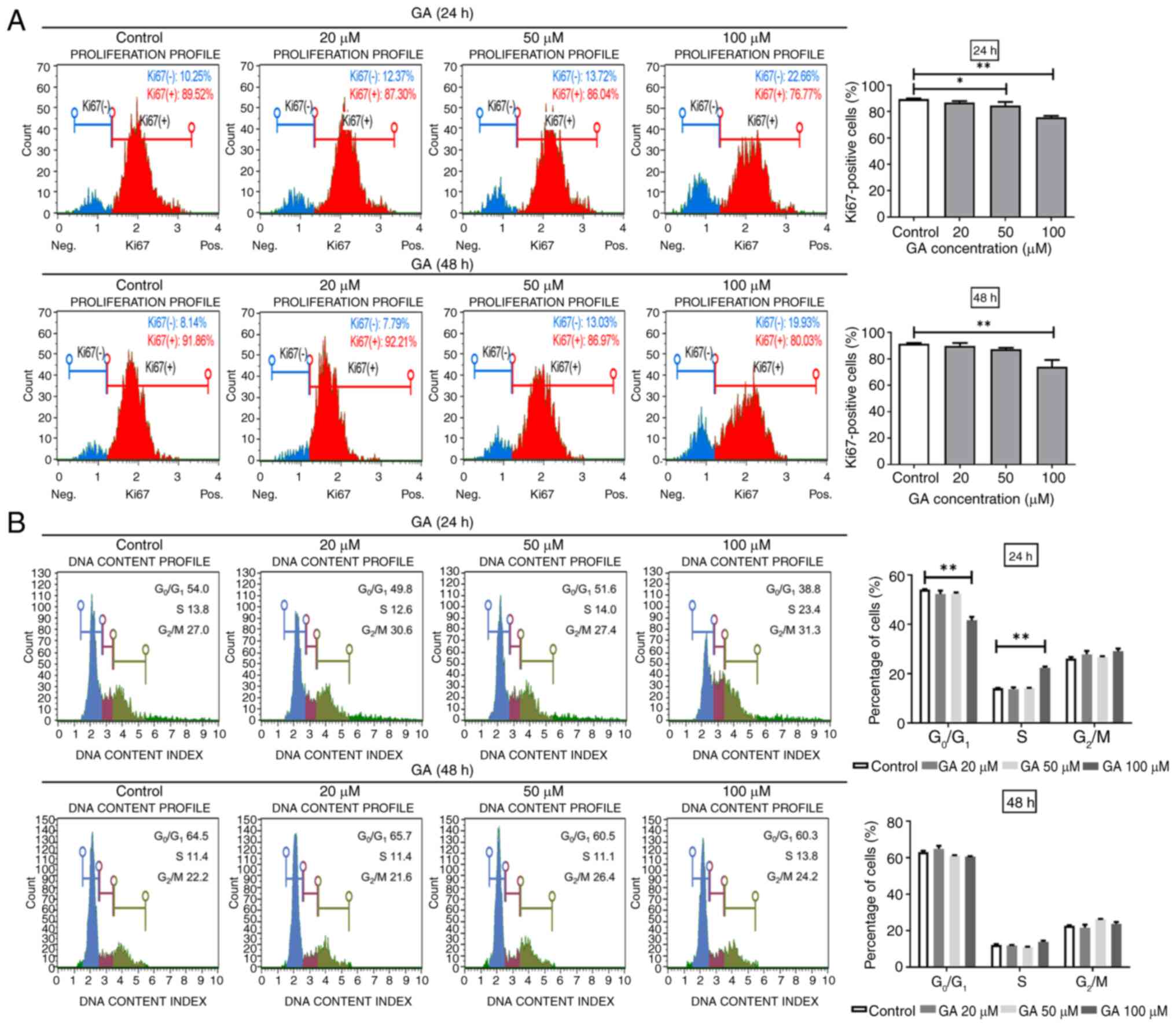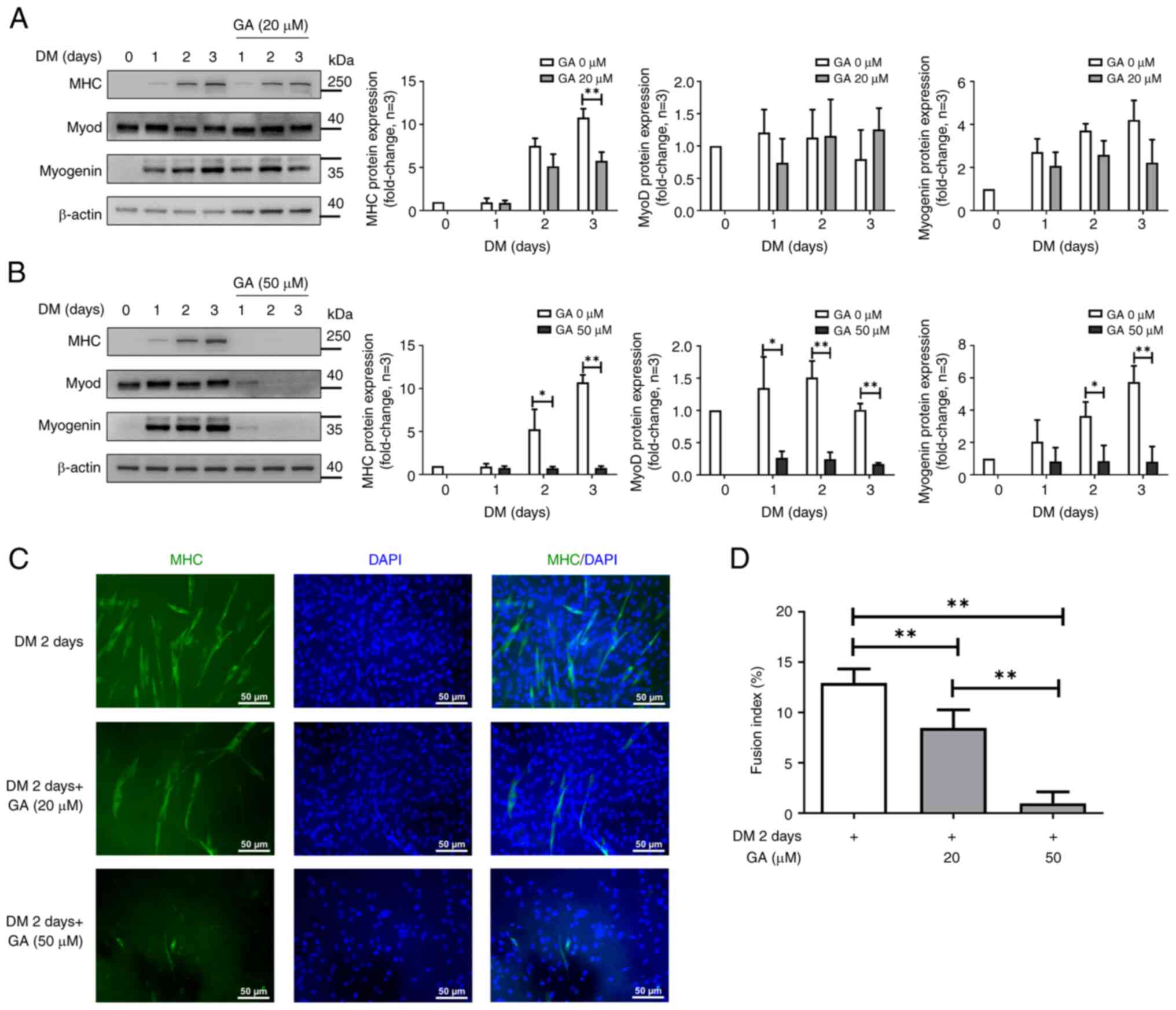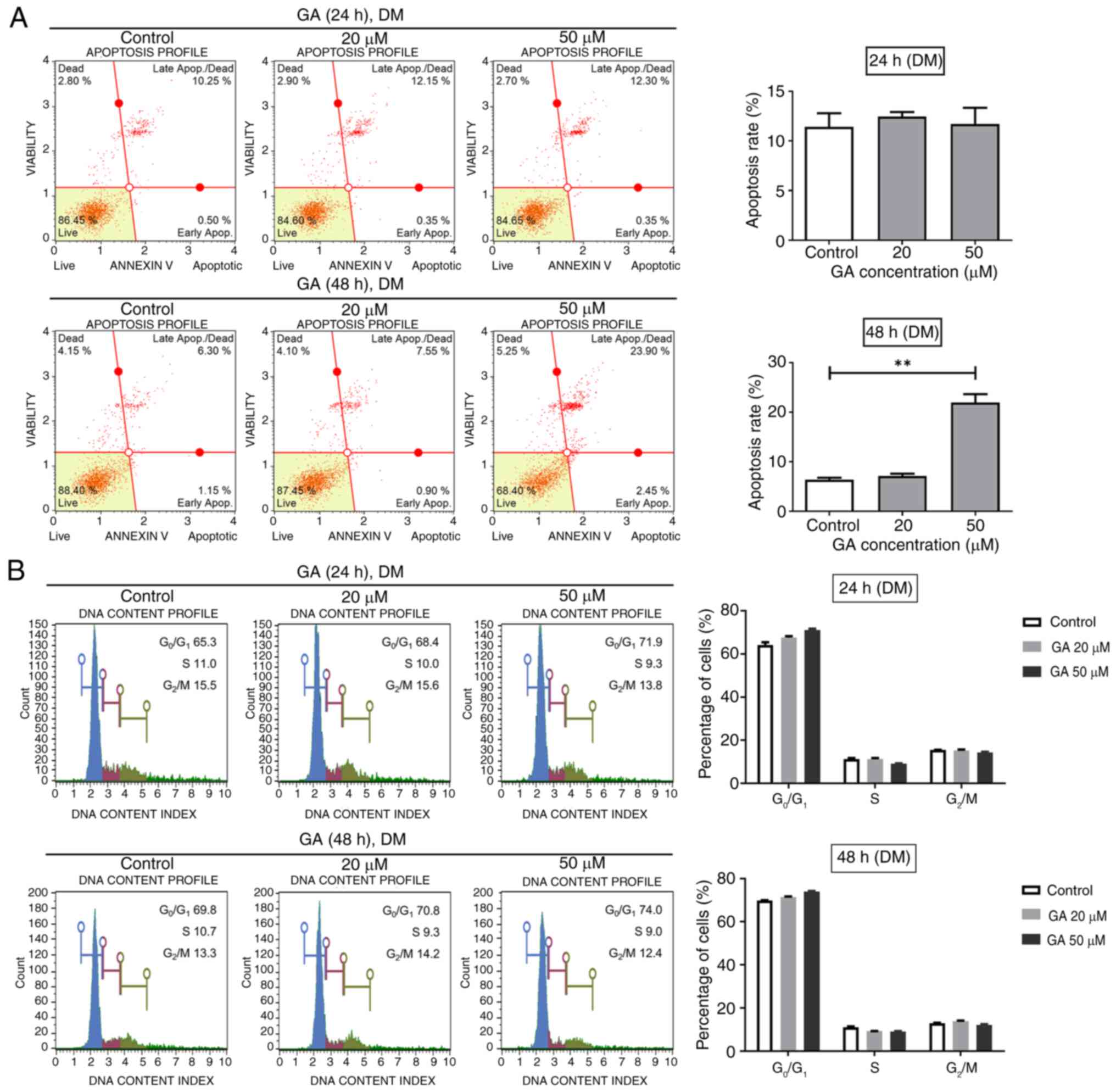|
1
|
Tajbakhsh S: Skeletal muscle stem cells in
developmental versus regenerative myogenesis. J Intern Med.
266:372–389. 2009. View Article : Google Scholar : PubMed/NCBI
|
|
2
|
Burattini S, Ferri P, Battistelli M, Curci
R, Luchetti F and Falcieri E: C2C12 murine myoblasts as a model of
skeletal muscle development: Morpho-functional characterization.
Eur J Histochem. 48:223–233. 2004.PubMed/NCBI
|
|
3
|
Lyu P and Jiang H: RNA-sequencing reveals
upregulation and a beneficial role of autophagy in myoblast
differentiation and fusion. Cells. 11:35482022. View Article : Google Scholar
|
|
4
|
Cao RY, Li J, Dai Q, Li Q and Yang J:
Muscle atrophy: Present and future. Adv Exp Med Biol. 1088:605–624.
2018. View Article : Google Scholar : PubMed/NCBI
|
|
5
|
Yang J, Cao RY, Li Q and Zhu F: Muscle
atrophy in cancer. Adv Exp Med Biol. 1088:329–346. 2018. View Article : Google Scholar : PubMed/NCBI
|
|
6
|
Cao YY, Wang Z, Yu T, Zhang Y, Wang ZH, Lu
ZM, Lu WH and Yu JB: Sepsis induces muscle atrophy by inhibiting
proliferation and promoting apoptosis via PLK1-AKT signalling. J
Cell Mol Med. 25:9724–9739. 2021. View Article : Google Scholar : PubMed/NCBI
|
|
7
|
Sandri M: Protein breakdown in muscle
wasting: Role of autophagy-lysosome and ubiquitin-proteasome. Int J
Biochem Cell Biol. 45:2121–2129. 2013. View Article : Google Scholar : PubMed/NCBI
|
|
8
|
Bodine SC and Baehr LM: Skeletal muscle
atrophy and the E3 ubiquitin ligases MuRF1 and MAFbx/atrogin-1. Am
J Physiol Endocrinol Metab. 307:E469–E484. 2014. View Article : Google Scholar : PubMed/NCBI
|
|
9
|
Schuelke M, Wagner KR, Stolz LE, Hübner C,
Riebel T, Kömen W, Braun T, Tobin JF and Lee SJ: Myostatin mutation
associated with gross muscle hypertrophy in a child. N Engl J Med.
350:2682–2688. 2004. View Article : Google Scholar : PubMed/NCBI
|
|
10
|
Zarrabi A, Perrin D, Kavoosi M, Sommer M,
Sezen S, Mehrbod P, Bhushan B, Machaj F, Rosik J, Kawalec P, et al:
Rhabdomyosarcoma: Current therapy, challenges, and future
approaches to treatment strategies. Cancers (Basel). 15:52692023.
View Article : Google Scholar : PubMed/NCBI
|
|
11
|
Ndjoko K, Wolfender JL and Hostettmann K:
Determination of trace amounts of ginkgolic acids in Ginkgo
biloba L. leaf extracts and phytopharmaceuticals by liquid
chromatography-electrospray mass spectrometry. J Chromatogr B
Biomed Sci Appl. 744:249–255. 2000. View Article : Google Scholar : PubMed/NCBI
|
|
12
|
Zhou C, Li X, Du W, Feng Y, Kong X, Li Y,
Xiao L and Zhang P: Antitumor effects of ginkgolic acid in human
cancer cell occur via cell cycle arrest and decrease the Bcl-2/Bax
ratio to induce apoptosis. Chemotherapy. 56:393–402. 2010.
View Article : Google Scholar : PubMed/NCBI
|
|
13
|
Lü JM, Yan S, Jamaluddin S, Weakley SM,
Liang Z, Siwak EB, Yao Q and Chen C: Ginkgolic acid inhibits HIV
protease activity and HIV infection in vitro. Med Sci Monit.
18:BR293–BR298. 2012. View Article : Google Scholar : PubMed/NCBI
|
|
14
|
Hua Z, Wu C, Fan G, Tang Z and Cao F: The
antibacterial activity and mechanism of ginkgolic acid C15:1. BMC
Biotechnol. 17:52017. View Article : Google Scholar : PubMed/NCBI
|
|
15
|
Li J, Li A, Li M, Liu Y, Zhao W and Gao D:
Ginkgolic acid exerts an anti-inflammatory effect in human
umbilical vein endothelial cells induced by ox-LDL. Pharmazie.
73:408–412. 2018.PubMed/NCBI
|
|
16
|
Ma J, Duan W, Han S, Lei J, Xu Q, Chen X,
Jiang Z, Nan L, Li J, Chen K, et al: Ginkgolic acid suppresses the
development of pancreatic cancer by inhibiting pathways driving
lipogenesis. Oncotarget. 6:20993–21003. 2015. View Article : Google Scholar : PubMed/NCBI
|
|
17
|
Qiao L, Zheng J, Jin X, Wei G, Wang G, Sun
X and Li X: Ginkgolic acid inhibits the invasiveness of colon
cancer cells through AMPK activation. Oncol Lett. 14:5831–5838.
2017.PubMed/NCBI
|
|
18
|
Baek SH, Ko JH, Lee JH, Kim C, Lee H, Nam
D, Lee J, Lee SG, Yang WM, Um JY, et al: Ginkgolic acid inhibits
invasion and migration and TGF-β-induced EMT of lung cancer cells
through PI3K/Akt/mTOR inactivation. J Cell Physiol. 232:346–354.
2017. View Article : Google Scholar : PubMed/NCBI
|
|
19
|
Hamdoun S and Efferth T: Ginkgolic acids
inhibit migration in breast cancer cells by inhibition of NEMO
sumoylation and NF-κB activity. Oncotarget. 8:35103–35115. 2017.
View Article : Google Scholar : PubMed/NCBI
|
|
20
|
Liu D, Li Z, Yang Z, Ma J and Mai S:
Ginkgoic acid impedes gastric cancer cell proliferation, migration
and EMT through inhibiting the SUMOylation of IGF-1R. Chem Biol
Interact. 337:1093942021. View Article : Google Scholar : PubMed/NCBI
|
|
21
|
Fukuda I, Ito A, Hirai G, Nishimura S,
Kawasaki H, Saitoh H, Kimura K, Sodeoka M and Yoshida M: Ginkgolic
acid inhibits protein SUMOylation by blocking formation of the
E1-SUMO intermediate. Chem Biol. 16:133–140. 2009. View Article : Google Scholar : PubMed/NCBI
|
|
22
|
Liu H, Lee SM and Joung H: 2-D08 treatment
regulates C2C12 myoblast proliferation and differentiation via the
Erk1/2 and proteasome signaling pathways. J Muscle Res Cell Motil.
42:193–202. 2021. View Article : Google Scholar : PubMed/NCBI
|
|
23
|
Miller JB: Myogenic programs of mouse
muscle cell lines: Expression of myosin heavy chain isoforms,
MyoD1, and myogenin. J Cell Biol. 111:1149–1159. 1990. View Article : Google Scholar : PubMed/NCBI
|
|
24
|
Jones NC, Fedorov YV, Rosenthal RS and
Olwin BB: ERK1/2 is required for myoblast proliferation but is
dispensable for muscle gene expression and cell fusion. J Cell
Physiol. 186:104–115. 2001. View Article : Google Scholar : PubMed/NCBI
|
|
25
|
Aman Y, Schmauck-Medina T, Hansen M,
Morimoto RI, Simon AK, Bjedov I, Palikaras K, Simonsen A, Johansen
T, Tavernarakis N, et al: Autophagy in healthy aging and disease.
Nat Aging. 1:634–650. 2021. View Article : Google Scholar : PubMed/NCBI
|
|
26
|
Yin H, Price F and Rudnicki MA: Satellite
cells and the muscle stem cell niche. Physiol Rev. 93:23–67. 2013.
View Article : Google Scholar : PubMed/NCBI
|
|
27
|
Zhang W and Liu HT: MAPK signal pathways
in the regulation of cell proliferation in mammalian cells. Cell
Res. 12:9–18. 2002. View Article : Google Scholar : PubMed/NCBI
|
|
28
|
Cao Y, Kumar RM, Penn BH, Berkes CA,
Kooperberg C, Boyer LA, Young RA and Tapscott SJ: Global and
gene-specific analyses show distinct roles for Myod and Myog at a
common set of promoters. EMBO J. 25:502–511. 2006. View Article : Google Scholar : PubMed/NCBI
|
|
29
|
Andrés V and Walsh K: Myogenin expression,
cell cycle withdrawal, and phenotypic differentiation are
temporally separable events that precede cell fusion upon
myogenesis. J Cell Biol. 132:657–666. 1996. View Article : Google Scholar : PubMed/NCBI
|
|
30
|
Massaccesi L, Goi G, Tringali C, Barassi
A, Venerando B and Papini N: Dexamethasone-induced skeletal muscle
atrophy increases O-GlcNAcylation in C2C12 cells. J Cell Biochem.
117:1833–1842. 2016. View Article : Google Scholar : PubMed/NCBI
|
|
31
|
Wang LJ, Lu W and Zhou TY: Current
applications of dexamethasone for cancer treatment. Yao Xue Xue
Bao. 50:1217–1224. 2015.(In Chinese). PubMed/NCBI
|
|
32
|
Madamsetty VS, Mohammadinejad R, Uzieliene
I, Nabavi N, Dehshahri A, Garcia-Couce J, Tavakol S, Moghassemi S,
Dadashzadeh A, Makvandi P, et al: Dexamethasone: Insights into
pharmacological aspects, therapeutic mechanisms, and delivery
systems. ACS Biomater Sci Eng. 8:1763–1790. 2022. View Article : Google Scholar : PubMed/NCBI
|
|
33
|
McLoughlin TJ, Smith SM, DeLong AD, Wang
H, Unterman TG and Esser KA: FoxO1 induces apoptosis in skeletal
myotubes in a DNA-binding-dependent manner. Am J Physiol Cell
Physiol. 297:C548–C555. 2009. View Article : Google Scholar : PubMed/NCBI
|
|
34
|
Fernando P, Kelly JF, Balazsi K, Slack RS
and Megeney LA: Caspase 3 activity is required for skeletal muscle
differentiation. Proc Natl Acad Sci USA. 99:11025–11030. 2002.
View Article : Google Scholar : PubMed/NCBI
|
|
35
|
Xia Q, Huang X, Huang J, Zheng Y, March
ME, Li J and Wei Y: The role of autophagy in skeletal muscle
diseases. Front Physiol. 12:6389832021. View Article : Google Scholar : PubMed/NCBI
|
|
36
|
Tanida I, Wakabayashi M, Kanematsu T,
Minematsu-Ikeguchi N, Sou YS, Hirata M, Ueno T and Kominami E:
Lysosomal turnover of GABARAP-phospholipid conjugate is activated
during differentiation of C2C12 cells to myotubes without
inactivation of the mTor kinase-signaling pathway. Autophagy.
2:264–271. 2006. View Article : Google Scholar : PubMed/NCBI
|
|
37
|
McMillan EM and Quadrilatero J: Autophagy
is required and protects against apoptosis during myoblast
differentiation. Biochem J. 462:267–277. 2014. View Article : Google Scholar : PubMed/NCBI
|
|
38
|
Ding Y, Ding Z, Xu J, Li Y and Chen M:
Pharmacological activities of ginkgolic acids in relation to
autophagy. Pharmaceuticals (Basel). 15:14692022. View Article : Google Scholar : PubMed/NCBI
|
|
39
|
Yoon SY, Lee JH, Kwon SJ, Kang HJ and
Chung SJ: Ginkgolic acid as a dual-targeting inhibitor for protein
tyrosine phosphatases relevant to insulin resistance. Bioorg Chem.
81:264–269. 2018. View Article : Google Scholar : PubMed/NCBI
|
|
40
|
Vertegaal ACO: Signalling mechanisms and
cellular functions of SUMO. Nat Rev Mol Cell Biol. 23:715–731.
2022. View Article : Google Scholar : PubMed/NCBI
|
|
41
|
Wilkinson KA and Henley JM: Mechanisms,
regulation and consequences of protein SUMOylation. Biochem J.
428:133–145. 2010. View Article : Google Scholar : PubMed/NCBI
|
|
42
|
Langston SP, Grossman S, England D, Afroze
R, Bence N, Bowman D, Bump N, Chau R, Chuang BC, Claiborne C, et
al: Discovery of TAK-981, a first-in-class inhibitor of
SUMO-activating enzyme for the treatment of cancer. J Med Chem.
64:2501–2520. 2021. View Article : Google Scholar : PubMed/NCBI
|
|
43
|
Kumar S, Schoonderwoerd MJA, Kroonen JS,
de Graaf IJ, Sluijter M, Ruano D, Gonzalez-Prieto R, Verlaan-de
Vries M, Rip J, Arens R, et al: Targeting pancreatic cancer by
TAK-981: A SUMOylation inhibitor that activates the immune system
and blocks cancer cell cycle progression in a preclinical model.
Gut. 71:2266–2283. 2022. View Article : Google Scholar : PubMed/NCBI
|
|
44
|
Du L, Liu W, Pichiorri F and Rosen ST:
SUMOylation inhibition enhances multiple myeloma sensitivity to
lenalidomide. Cancer Gene Ther. 30:567–574. 2023. View Article : Google Scholar : PubMed/NCBI
|
|
45
|
Kim HS, Kim BR, Dao TTP, Kim JM, Kim YJ,
Son H, Jo S, Kim D, Kim J, Suh YJ, et al: TAK-981, a SUMOylation
inhibitor, suppresses AML growth immune-independently. Blood Adv.
7:3155–3168. 2023. View Article : Google Scholar : PubMed/NCBI
|
















